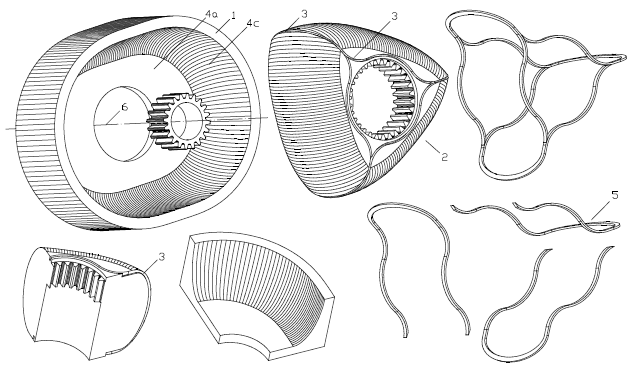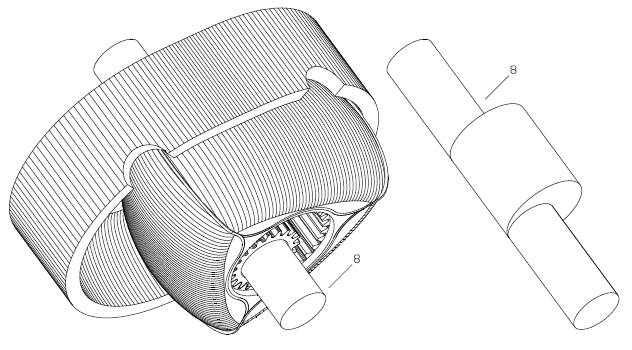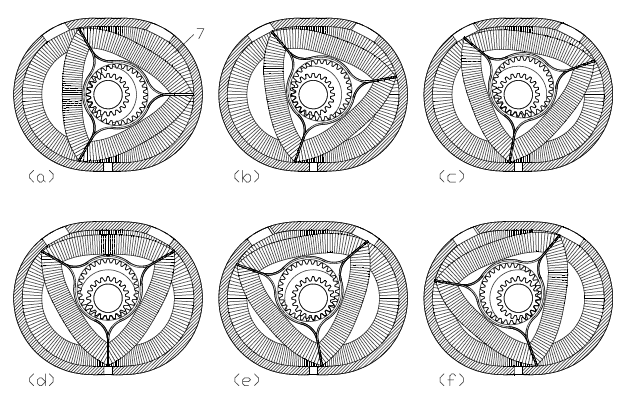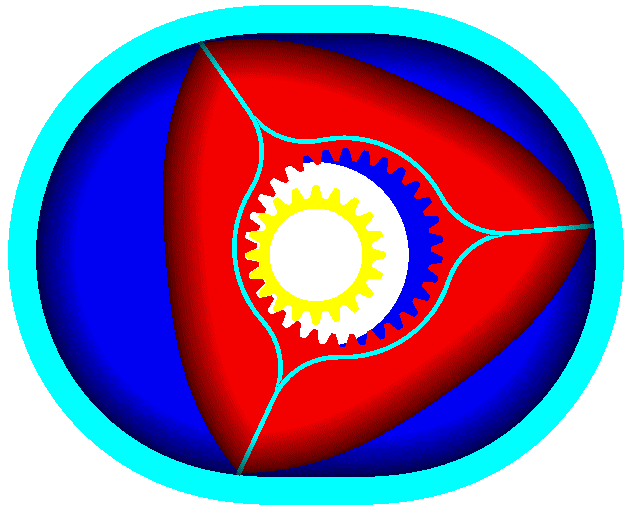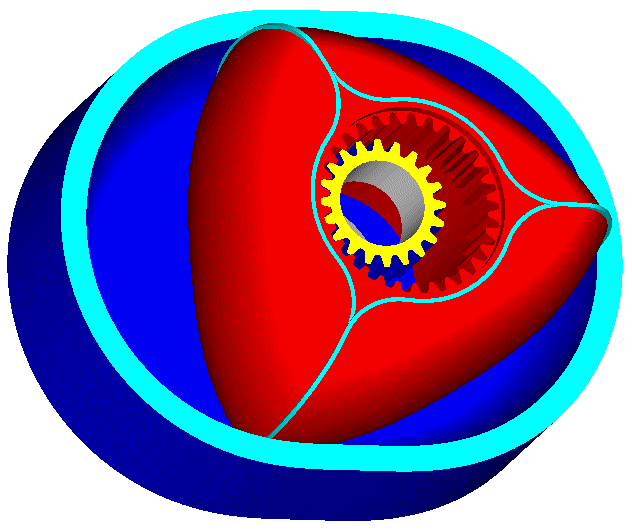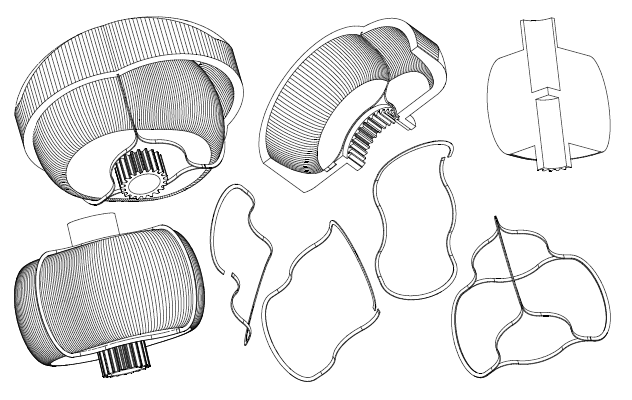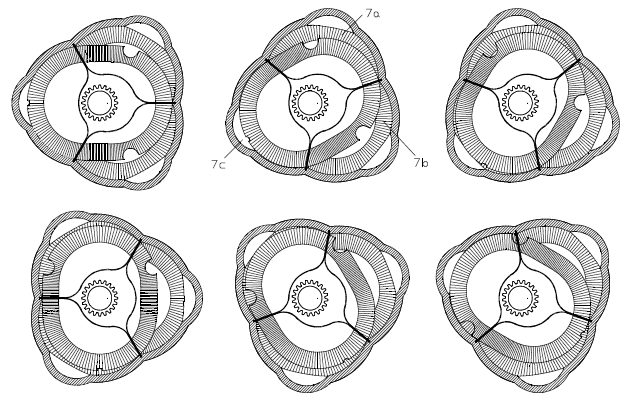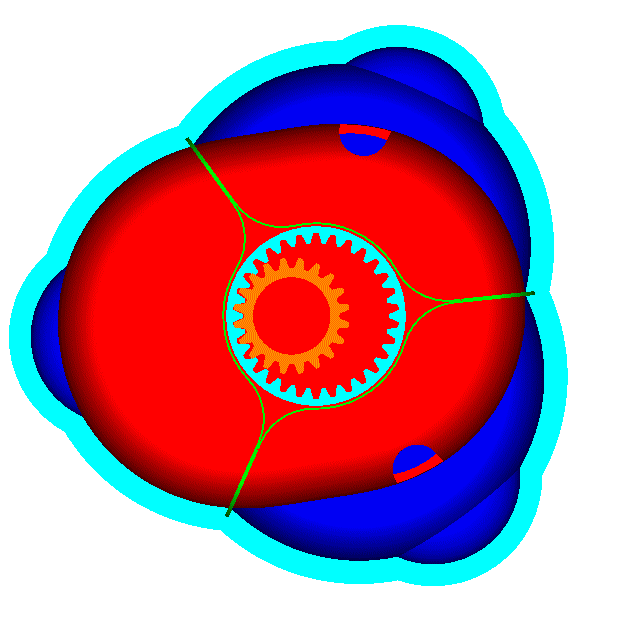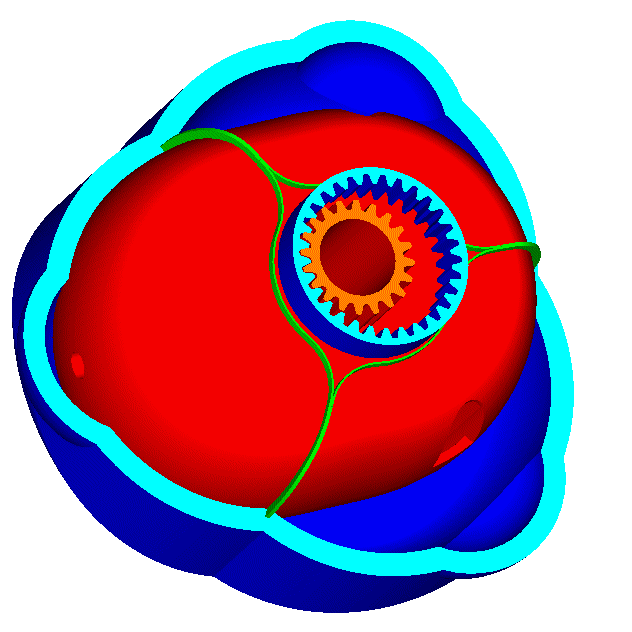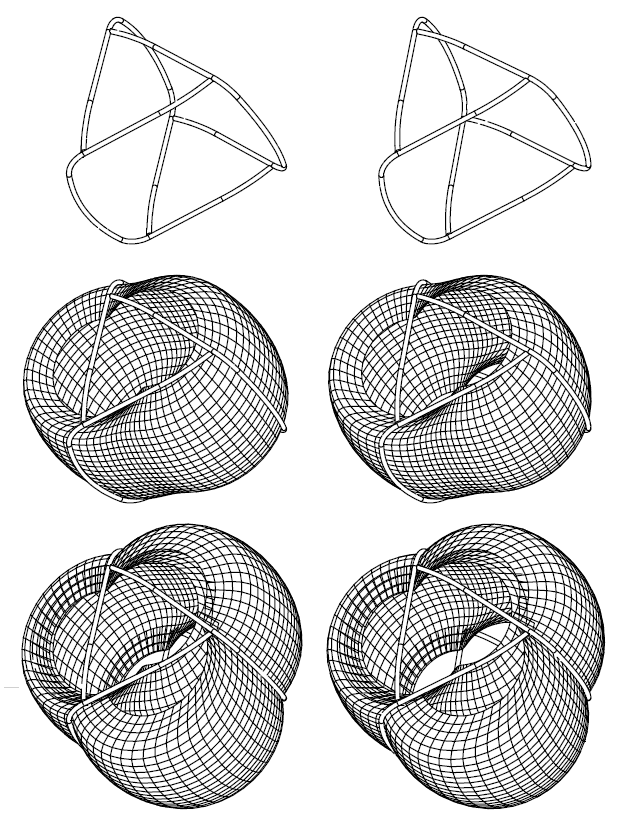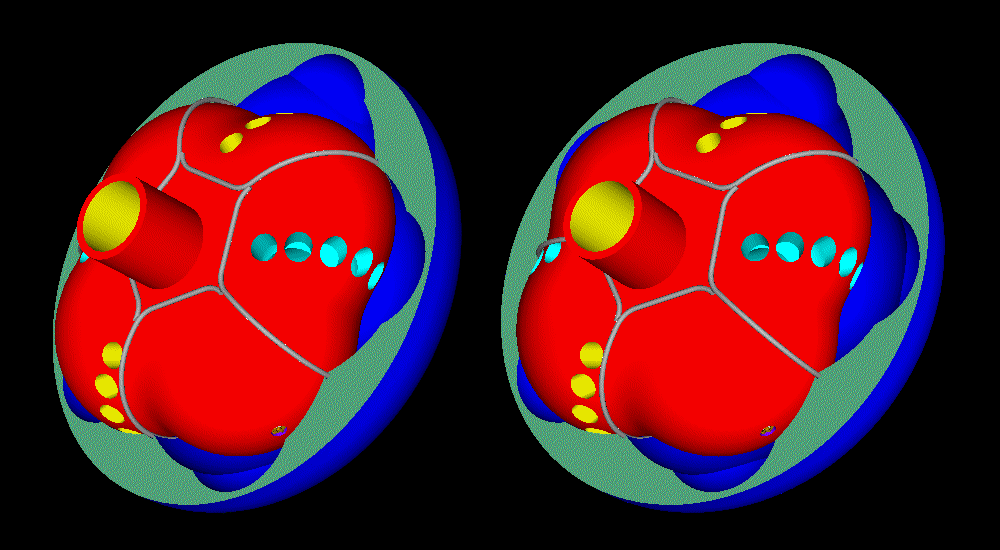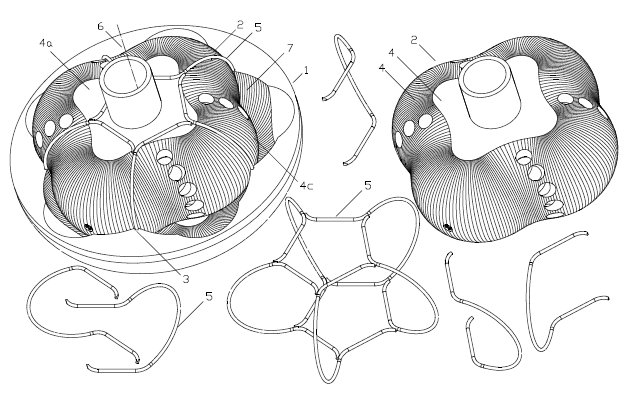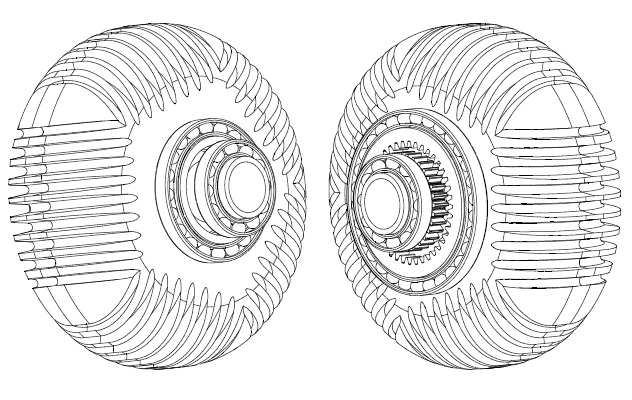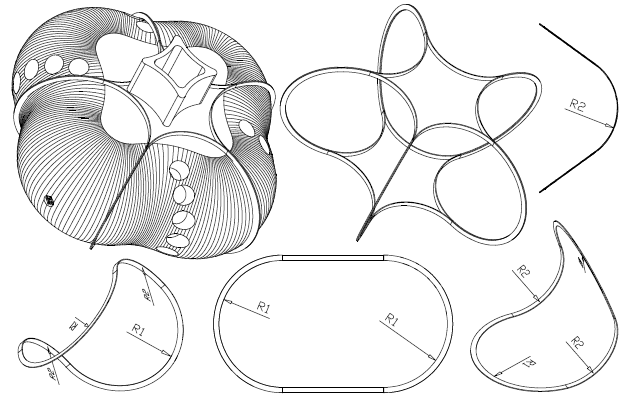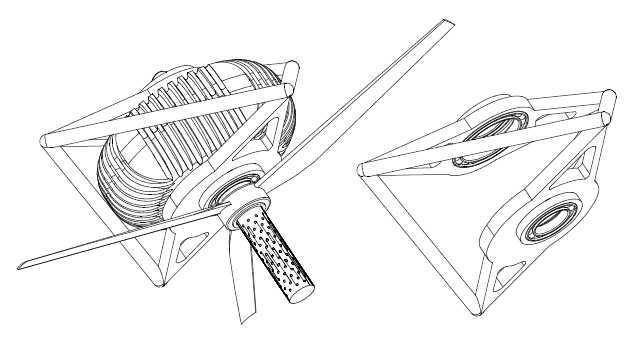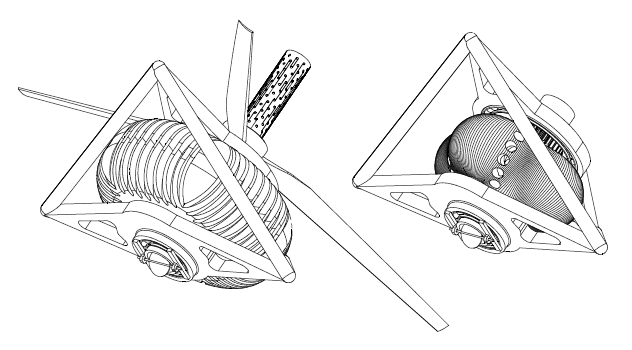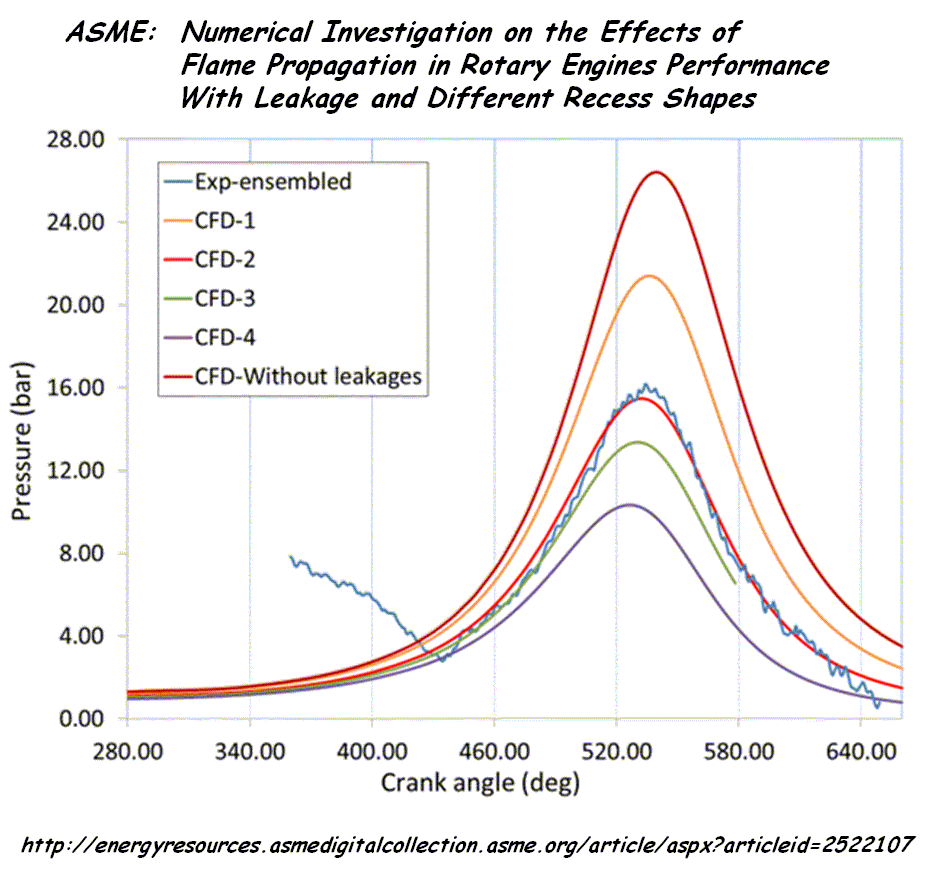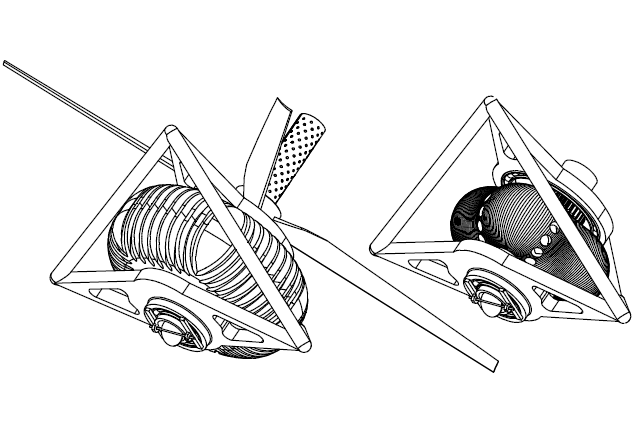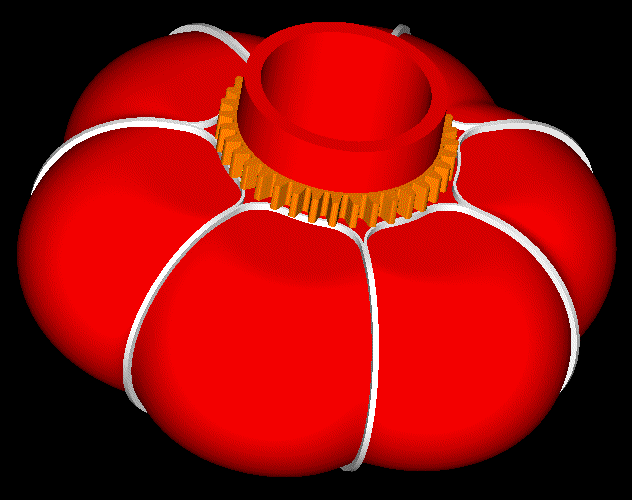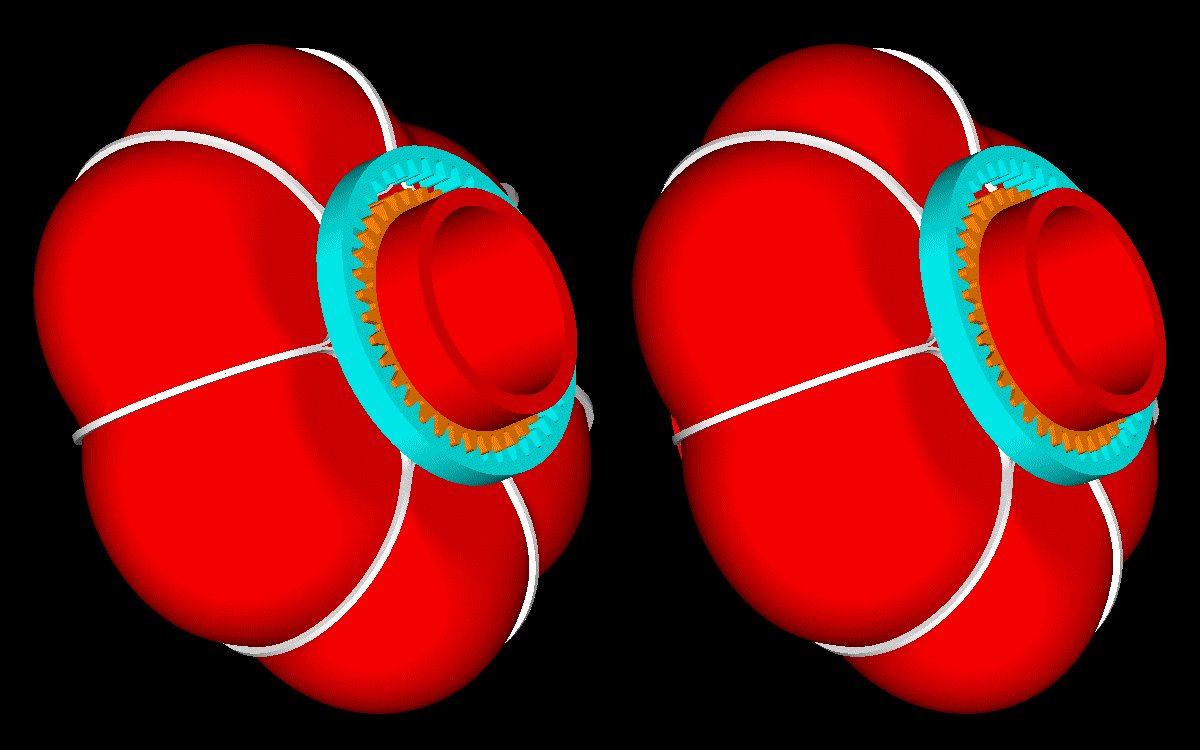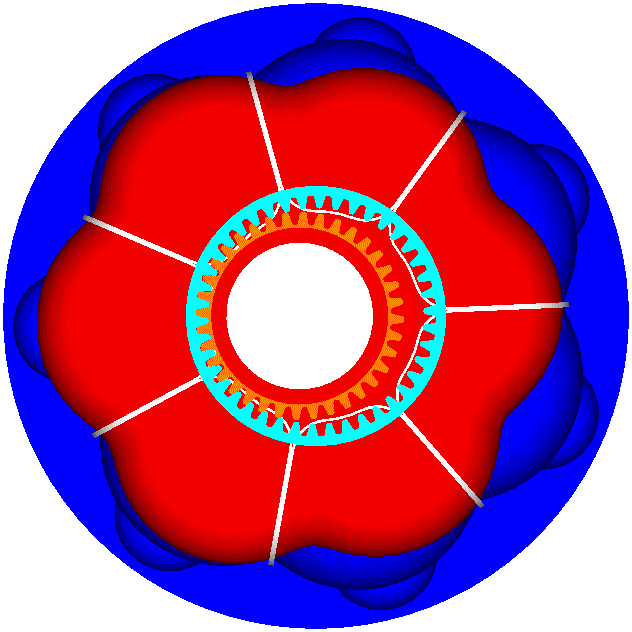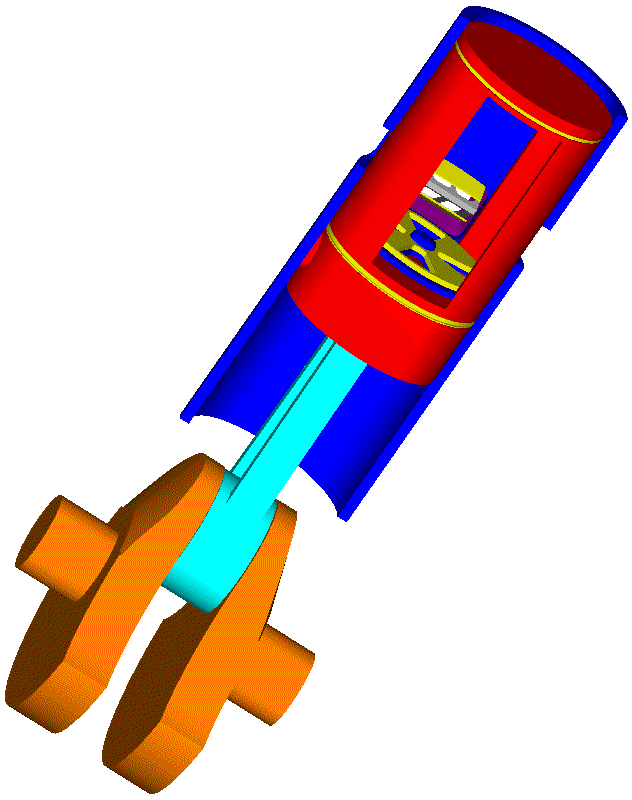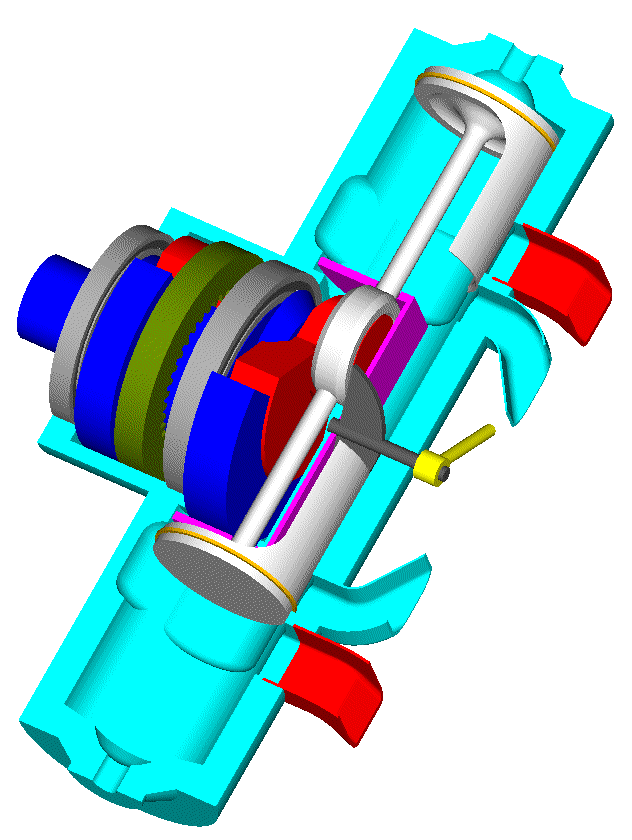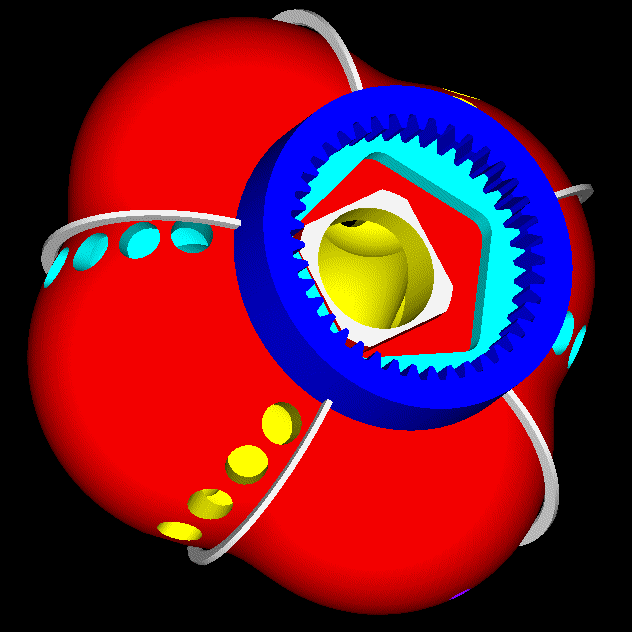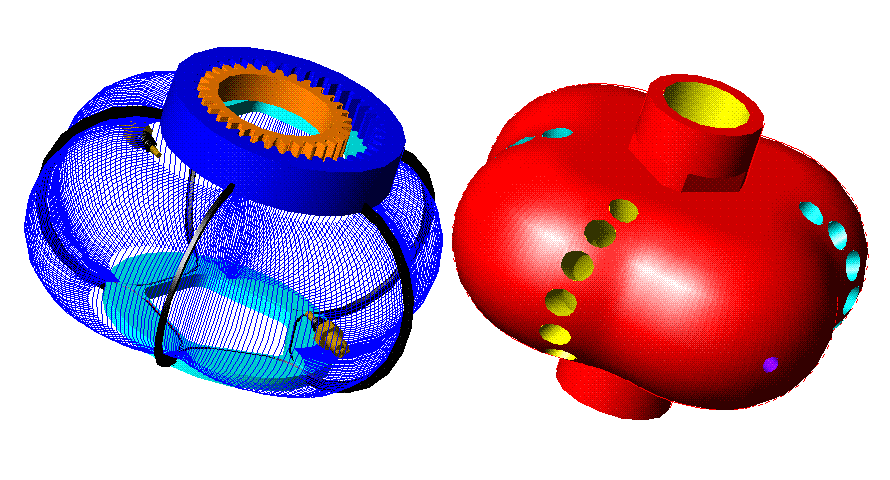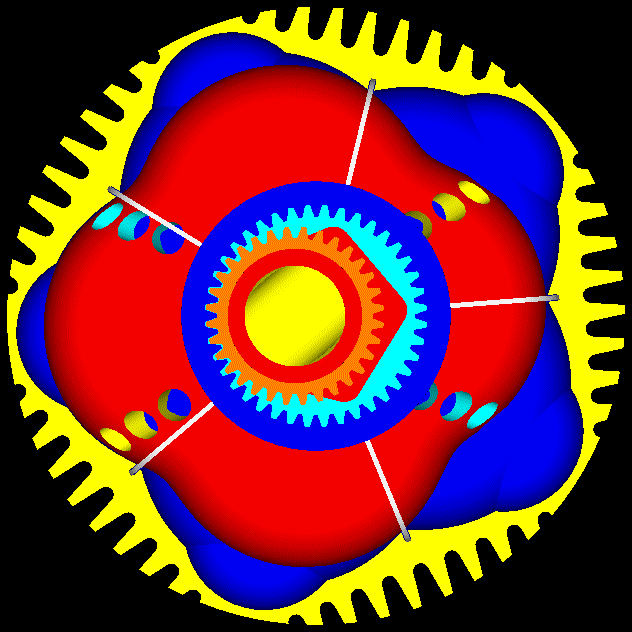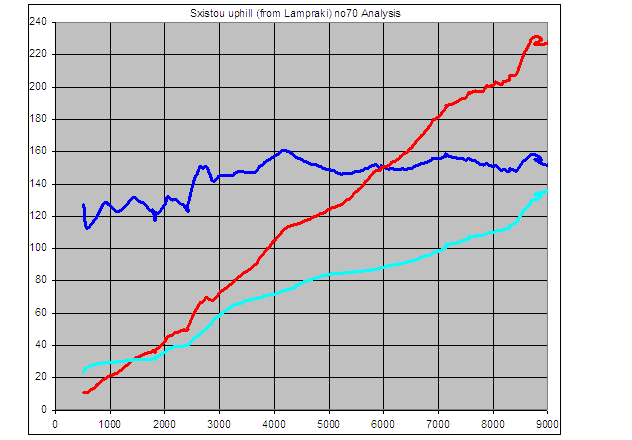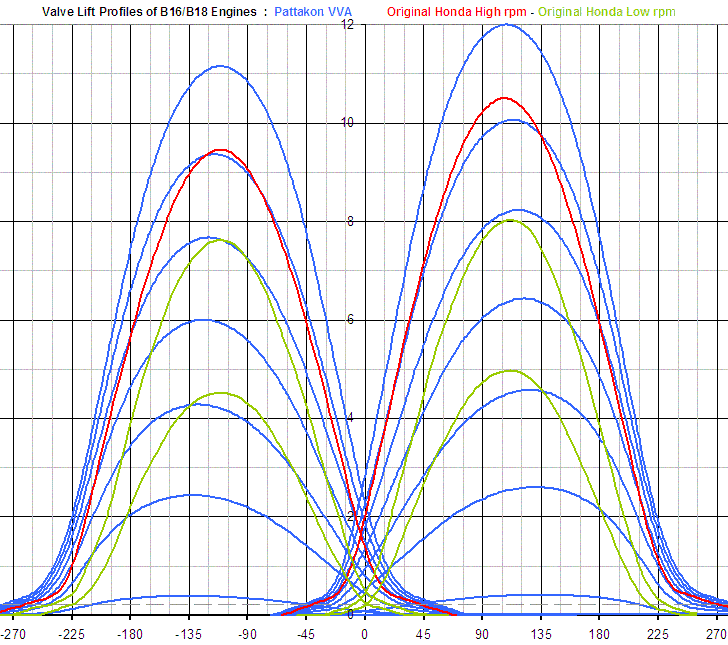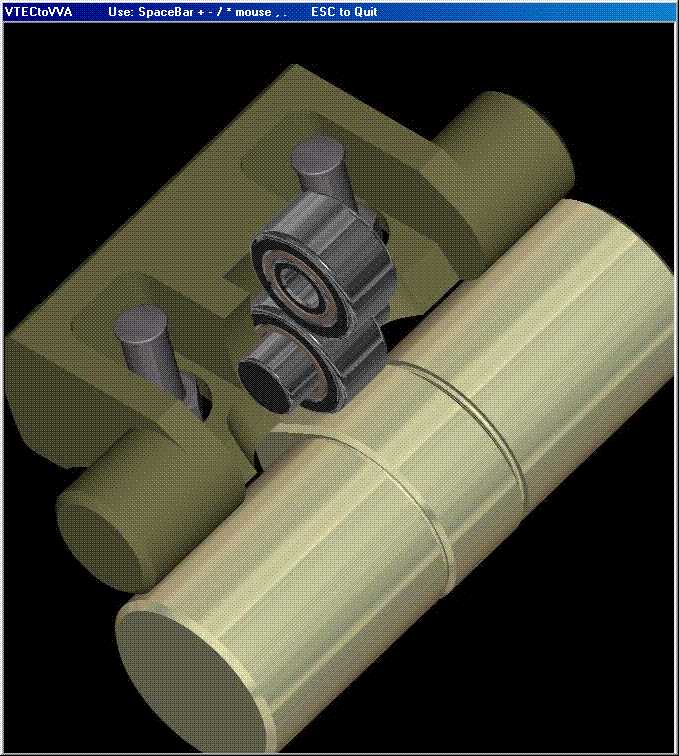Hello Muniix
You write:
“Doesn't it still have the large surface area issue's of the conventional wankel engine, my brain was a bit startled by the psychodelic images and my tired state. The curved surfaces would be greater or smaller in area ?
Heat loss issues? which will limit its TE. There was some rotary engine with an 'external' pre-combustion process, tji like from memory.”
According the “Liquid Piston” at
http://www.liquidpiston.com, their non-Wankel engine

runs closer to a constant volume combustion than the reciprocating piston engines.
Take the five “cylinder” PatWankel shown in the drawings / animation.
At TDC (i.e. wherein the volume of the working chamber is minimised) almost all the air / mixture entered into the working chamber is concentrated in a compact cavity (spherical or semi-spherical etc).
As compared with a Ducati Panigale 1299cc reciprocating piston engine running at the same revs with the revs of the inner body of the PatWankel, the PatWankel provides more than 40% additional time around the TDC (1.15*1.25=1.43)
The 15% longer dwell at the TDC comes from the harmonic (i.e. pure sinusoidal) variation of the combustion chamber volume:
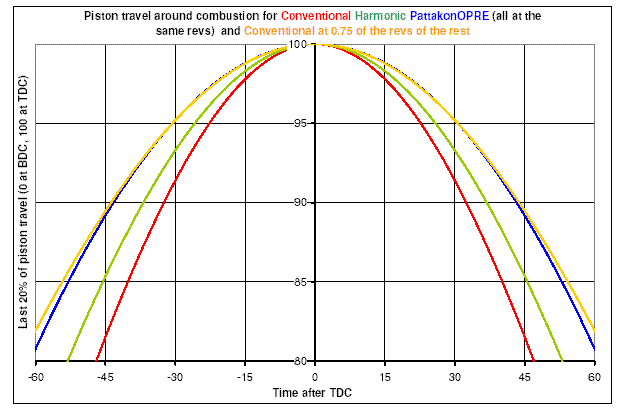
the 1.25 comes from the 225 degrees required in order the chamber to go from its TDC to its BDC (wherein the volume is maximised):
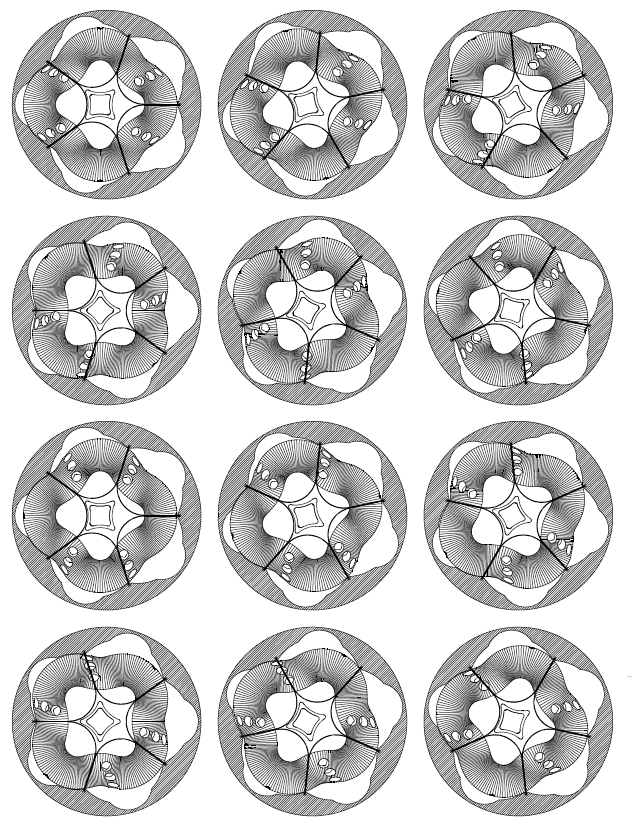
There is plenty of time and a very short distance for the flame to travel, enabling the combustion to complete inside the compact cavity.
Most of the thermal loss happens during the combustion.
The thermal loss continuous during the expansion, however the rate of thermal loss during the combustion is way higher.
Compare it with the thermal loss in the Ducati Panigale 1299 wherein the flame, during the combustion, sweeps the inner surfaces of a wide (116mm diameter) short (about 5mm height) cylinder (like a coin) having abnormal bottom and top (valve pockets etc).
Reasonably, the thermal loss towards the walls during the combustion will be substantially more than in the above PatWankel.
In the conventional Wankel the flame sees way bigger surfaces and has to travel along way longer distances. This explains the extreme thermal loss in the Wankel rotary.
So, there are reasons for lower thermal loss in the PatWankel, despite the bigger area of its wall surfaces, than in a reciprocating piston over-square engine.
Quote from:
http://gasturbinespower.asmedigitalcoll ... id=2467298
“Abstract
The Wankel rotary engine offers a greater power density than piston engines, but higher fuel consumption and hydrocarbon emissions, in large part due to poor gas sealing. This paper presents a model for the deformable dynamics of the side seal, which completes a set of modeling tools for the comprehensive assessment of the gas leakage mechanisms in the rotary engine. It is shown that the main leakage mechanisms for the side seals are: (1) opening of the inner flank due to the contact with the trailing corner seal, (2) flow through the gap with the leading corner seal, (3) simultaneous opening of both inner and outer flanks due to body force at high speed, and (4) running face leakage due to nonconformability at high speed. The leakage mechanisms are qualitatively validated at low speed with observed oil patterns on the rotor from laser-induced fluorescence (LIF) experiments. Finally, the predicted total leakage area for all the gas seals ranges from 1.5 mm2/chamber at low speeds to 2 mm2/chamber at high speeds, which is in agreement with the previous experimental studies, and the three gas seal types (side seals, apex seals, and corner seals) each accounts for about 1/3 of the total leakage, with minor variation as a function of speed.”
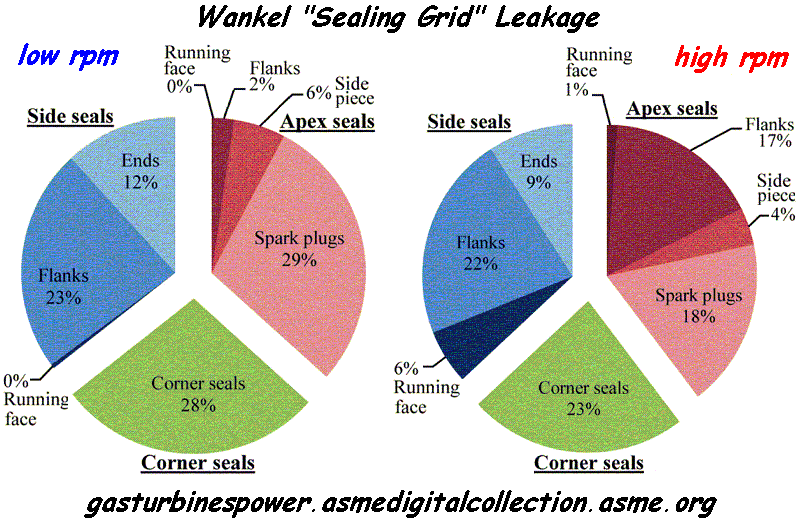
According the above abstract / plot, the leakage is the big problem of the rotary engines.
Take a 650cc single cylinder reciprocating piston engine and make a hole of 1.5mm diameter (1.77mm2 area) on the piston crown towards the crankcase.
No doubt, the engine can still work, however a significant amount of high pressure gas will escape reducing the efficiency (energy is consumed to compress the gas that leaks) and worsening the emissions.
This is the way the Wankel works till now.
The gaps around each combustion chamber have an equivalent total leakage area of 1.5mm2 at low revs, to 2mm2 at high revs.
Compare the leakage from the “running surfaces” with the rest leakage.
The mechanical friction in a rotary engine like the PatWankel 5-cylinder is substantially lower than in an “equivalent” reciprocating piston engine.
There is no valve train.
There are no piston skirts to thrust on cylinder walls.
The four roller bearings on the frame and the sliding of the seals on the working surface are the only cause of mechanical friction.
All the energy / torque passes directly through the shaft of the inner body to the load.
The outer body receives no torque, at all.
If you count all these, things get more than interesting.
You also write:
“the variable gears Ring/Planet gear with the complex cut, is their further information on this?”
The synchronising gearwheels are conventional and cheap.
There is nothing special with them.
And they run unloaded; only when the revs change fast (braking with the engine, for instance) only then the teeth are loaded with inertia load (to accelerate the outer body).
You also write:
“And Manolis the spread sheet you sent me was fine, only comment I have is that later calculations were using previous calculations, ie acceleration used two speed calculations and this can cause the floating point rounding errors to accumulate and why 0.1 + 0.2 != 0.3 under the standard, I also remember that excell has a financial maths package which had some issues with scientific calculations, this was a long time ago thou and their was a difference at that point. Not quite "Intel inside can't Divide" The CSIRO found within a month of the Pentium being released.”
I think it is simpler than this.
The spreadsheet was made for someone who couldn’t calculate the affect of the wrist pin offset on the acceleration of the piston.
For simplicity I took 1 degree steps.
The spreadsheet calculates the position of the piston per crank degree.
Then the spreadsheet takes the change of the piston position for every two successive degrees and calculates the piston velocity per crank degree.
Then the spreadsheet takes the difference of the piston velocity for every two successive degrees and calculates the piston acceleration.
If you want more accuracy, just put more steps ( for instance, from 1 crank degree step, go to 0.1 degree or to 0.01 degree step). But, do you really need such accuracy?
Thanks
Manolis Pattakos
